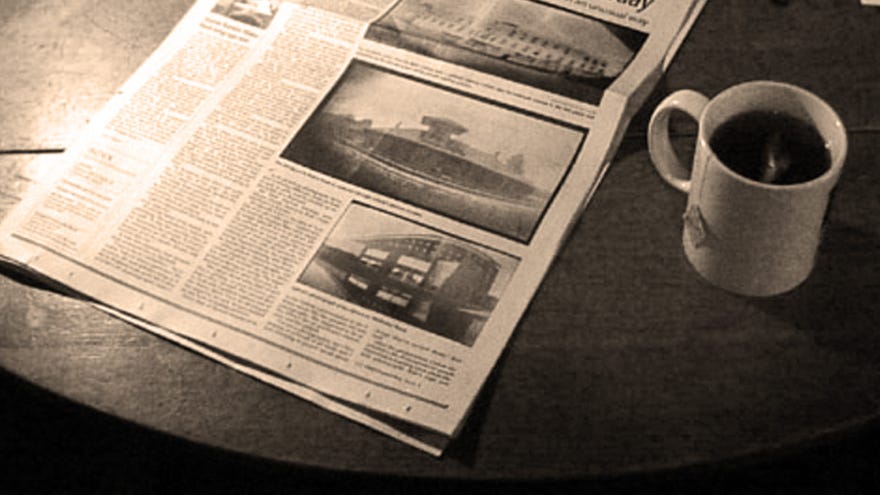The Sunday Papers
Read more
Sundays are for remembering to drink plenty of water, because I never do. Before you sink a glass, let's read this week's best writing about games.
For Vice, Khee Hoon Chan traced the roots of Flash preservation. A great article, and I particularly liked the bit concerning stigma around Flash game developers.
Flash was originally conceived as a means to bring animation to the web in the early 90s. It emerged when the very notion of moving images online consisted mostly of GIFs; animations, much less videos, was impossible to imagine back in those days. The platform soon nurtured a thriving niche of browser games and fully interactive websites, heralding an era of abstract—and sometimes downright bizarre—creative works. One of them is the hauntingly rich digital world of Blue Suburbia, the brainwave of net artist and game developer Nathalie Lawhead. A collection of interactive poetry housed within a ghastly wilderness and twisting hallways, it’s a virtual space where you can freely roam, explore and ruminate in—all within the constraints of your web browser.
In incredibly dystopian news, Amazon have expanded their gamification program to encourage warehouse employees to work harder. The original report I've linked there was written by Paris Martineau and Mark Di Stefano for The Information, but The Verge has condensed it if you're after the TLDR version. God, I hate it.
It’s been known since at least 2019 that Amazon uses gamification in the form of workstation games to try to incentivize employees to improve productivity, but The Information reports that Amazon is now expanding those methods to warehouses in at least 20 states throughout the country. Many of the games tend to be simple virtual representations of how fast the worker is completing a task. One, called MissionRacer, moves a car around a track while a picking employee sorts products into appropriate boxes, as reported by The Washington Post at the time.
Over on Gamasutra, Nicholas O'Brien wrote about games which employ choice as a metric, and how their narrative design suffers because of it.
Though this convention has been emulated and adapted by other narrative designers and writers it unfortunately diminishes the power of nuance within interactive storytelling. By overtly validating a player’s choice as “mattering” you unintentionally subvert their agency. Ironically, "choices matter" games attempt to leverage players choices by magnifying their actions, but I’d argue that this design results in the opposite effect. This approach quantifies narrative, reducing storytelling to a number-crunching mechanic equivalent to hit-points or high score.
For Gfinity, Jake Green wrote about why we should play Concrete Genie, and how it's often left to the citizens of a city to imbue it with life.
Turns out having to constantly meet such ugliness on a daily basis can be a real catalyst for artistic expression, as evidenced by the amazing street art that gradually built up in these run-down parts of town (you can head here to check out an awesome site that collects the street art of Sheffield). The people breathe colour and life into the walls they cover with their art, giving the old factories and warehouses a new function: outdoor exhibitions that start to lure people out of the more built-up areas of the city.
Music this week is the Square Enix Chill Out Arrangement Tracks - 80's Mix, a lo-fi chill-ified selection of tracks from Squeenix's back catalogue.
In a bizarre follow-up to the Weetabix shoes, I spotted a set of disgustingly pricey bread-slippers. Although I'll give it to them, I like the way it's packaged and their commitment to the theme.
Alright, I'm off. Hope you're having a delightful weekend so far!

